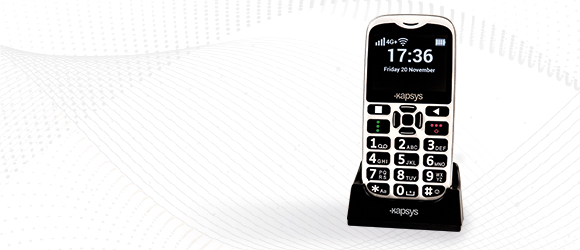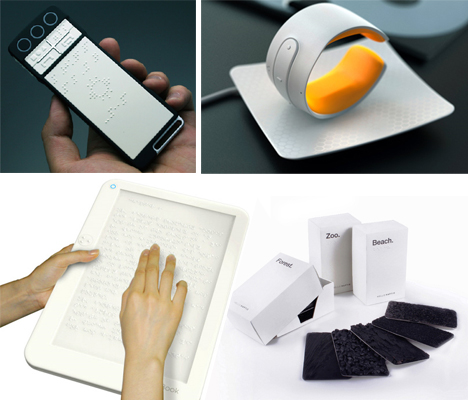Mobility Aids for Visually Impaired Users: Traveling the World with Confidence
Mobility Aids for Visually Impaired Users: Traveling the World with Confidence
Blog Article
Empowering Freedom With Assistive Modern Technology for the Blind
The integration of assistive modern technology right into the lives of people with aesthetic problems stands for a considerable advancement in promoting self-reliance and self-sufficiency. From ingenious screen readers to sophisticated smart canes, these tools not just improve everyday navigating and communication yet also empower users to involve meaningfully in different aspects of life. As we explore the myriad advantages and real-world applications of these innovations, it comes to be crucial to check out the hidden factors that contribute to their efficiency and the potential for future advancements in this vital area.
Overview of Assistive Technology

The growth of assistive modern technology is based in concepts of inclusivity and empowerment. Technologies in software program, hardware, and sensory improvements offer customers with choices tailored to their certain demands. From display viewers that transform message to speech, to tactile tools that convey details through touch, these devices change the way people engage with their environments.
Along with practical applications, assistive innovation fosters greater social incorporation and involvement in different industries, including education and employment (Screen readers for the blind). As r & d remain to develop, the possibility for assistive modern technology to even more enhance the lives of visually impaired people remains promising, leading the way for an extra equitable culture where every person can grow
Sorts Of Assistive Tools
A selection of assistive gadgets have actually arised to support people with visual problems, each created to fulfill certain needs and boost day-to-day functioning. These tools range from low-tech solutions to modern technologies, offering diverse options for users.
Low-tech devices consist of magnifiers and large-print materials that assist in analysis and writing. Braille tools, such as Braille stylus pens and slates, make it possible for responsive analysis and communication. Orientation and movement help, like white walking sticks, help customers browse their environment securely.
On the greater end of the spectrum, electronic magnifying systems and display readers supply significant support. Electronic magnifiers permit customers to expand text and pictures on screens, while screen readers convert electronic material right into manufactured speech, helping with access to info on computer systems and smart devices.
Mobile phone applications likewise play a crucial function, supplying functions like message acknowledgment and navigation assistance. Wearable modern technology, such as wise glasses furnished with augmented fact, is arising as a promising device to boost situational awareness.
Advantages of Assistive Modern Technology
The combination of assistive innovation substantially boosts the high quality of life for individuals with aesthetic disabilities. These technologies equip individuals by advertising freedom, enabling them to browse their atmospheres more properly and execute everyday jobs with better simplicity. For instance, screen viewers and magnifying software application enable individuals to accessibility digital details, cultivating specialist and academic opportunities that may have formerly been out of reach.
Additionally, assistive devices such as clever canes and GPS applications offer real-time navigation support, improving wheelchair and safety. This increased autonomy not just enhances self-worth yet likewise encourages social engagement, permitting users to take part even more fully in their communities.
Assistive modern technology additionally helps with communication, aiding customers connect with others with voice recognition and text-to-speech applications. This capability is vital for keeping partnerships and accessing important info.
Additionally, the personalization choices available with numerous assistive innovations make sure that individuals can customize tools to their specific needs, even more enhancing functionality and performance. Overall, the advantages of assistive technology for individuals with aesthetic impairments are extensive, advertising an extra inclusive culture where his comment is here every person can seek their goals and goals.
Study and Success Stories
Highlighting the transformative effect of assistive innovation, numerous study illustrate just how people with aesthetic disabilities have efficiently incorporated these devices right into their day-to-day lives. One engaging instance involves an university student that used screen analysis software program to navigate on the internet sources and scholastic products successfully. This innovation not only facilitated her education and learning yet likewise improved her confidence in joining conversations and team jobs.
One more study includes an expert that employs a mobile phone application developed for navigating and item recognition. By utilizing this application, he has gained back freedom in both his personal and workplace, allowing him to commute separately and involve with coworkers more properly.
In addition, a retired person shared her experience with braille e-readers, which allowed her to access a large selection of literature and stay attached with her area via publication clubs.
These success stories emphasize the critical role of assistive technology in cultivating independence, boosting lifestyle, and promoting social integration for people with visual impairments (Assistive technology for the blind). By accepting these innovative tools, users can overcome obstacles and confiscate possibilities that add to their individual and professional gratification

Future Trends in Assistive Modern Technology
Development in assistive modern technology is poised to redefine the landscape of support for people with visual problems. Emerging trends highlight the assimilation of synthetic knowledge (AI) and artificial intelligence, which improve the functionality of devices that assist with Check Out Your URL navigating and details access. AI-driven applications are now qualified of interpreting visual information in real-time, making it possible for users to involve with their atmosphere extra individually.
Additionally, the development of wearable innovation is progressing swiftly. Smart glasses equipped with augmented reality (AR) can supply audio descriptions of environments, transforming exactly how customers engage with public rooms. These devices not just advertise freedom however also foster social incorporation.
Furthermore, the Internet of Things (IoT) is making homes smarter, enabling smooth connection between assistive devices and daily appliances. This connection encourages individuals by enabling voice-activated controls and computerized responses customized to specific needs.
Conclusion
Finally, assistive innovation plays an essential duty in equipping individuals with visual problems by enhancing their freedom and engagement with their environments. The varied array of applications and gadgets readily available not just facilitates navigation and communication yet likewise promotes social combination and opportunities for individual and professional development. As advancements proceed in this field, the capacity for improving the lifestyle for those with aesthetic problems will broaden, promoting greater freedom and empowerment.

Report this page